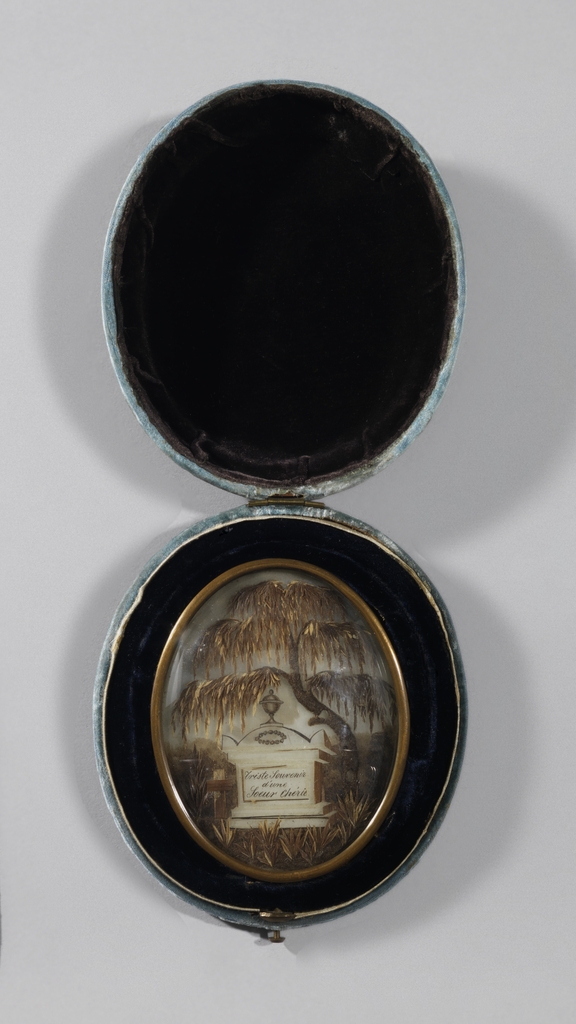This touching object, made of hair cut into patterns, is a tribute to a lost sister. It expresses the neoclassical style of its day with the Greek-style tomb, but also references the sister’s Christianity by the presence of a cross that has been created from bands of hair. The tree is a weeping willow, an appropriately obvious reference typical of this style of picture. Some miniature pictures of the late 18th and early 19th centuries were done with the hair of the lost beloved and were executed by well-trained amateur women. Others were created by professionals who had various stock design elements from which clients could choose.
Despite the fact that England and France were at war throughout much of this period, the English put French style on a pedestal. They chose to use the French language for many inscriptions, even when aimed at English speakers. The ability to speak French was regarded as a sign of sophistication and education. The inscription reads, “Triste Souvenir d’une Soeur Cherie” (“Sad Memory of a Cherished Sister”). The Greek style of the tomb helps date the piece as likely to have been made after 1807, the year Thomas Hope introduced a Greek style of antiquity to great popularity in England with his book based on his own house called Household Furniture and Interior Decoration. In turn, his book owed a lot to the French designers, Charles Percier and Pierre-François-Léonard Fontaine, whose designs were first introduced serially in 1801.
Though it is about death, this work is a statement of the design fashions of its day: Greek classicism combined with sentiment through the use of hair. The skill needed to create the shadows made of brown hair on the unpainted white tomb, as well as each of the delicate willow strands of leaves, reinforces the depth of devotion of the artist to the lost loved one.
